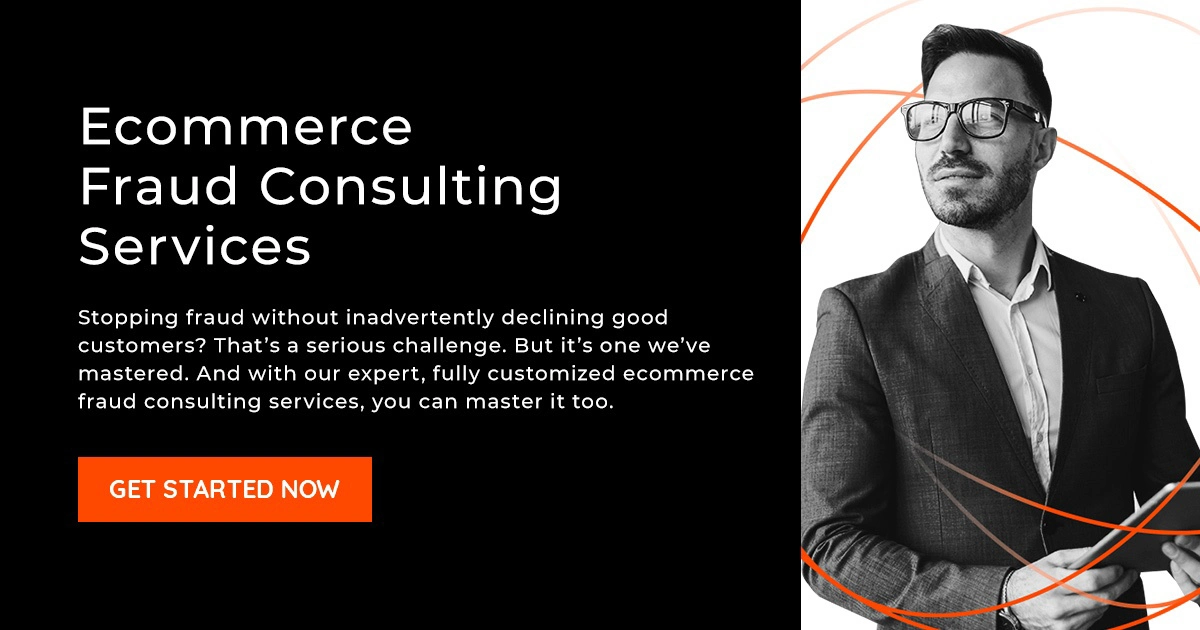Holiday Ecommerce in the New Era
The holiday season is always a boon for ecommerce, but this year is already blowing the roof off prior years’ performance. That shouldn’t surprise anyone. The pandemic jetted ecommerce 5-7 years into the future in terms of consumers, fraud and expectations – creating significant changes.
What are these changes?
- More consumers are shopping online – A rush of new customers dipped their toes into the ecommerce pool for the first time last year.
- Fraud is rampant – More online transactions make it easier for fraudsters to slip under the radar with tried-and-true fraud schemes.
- Millennials and Gen Z shoppers are making their online presence known – They want a personalized customer experience and have little patience for being declined.
- Staffing is limited – With the “great resignation” impacting every business, enterprise retailers can no longer just pull employees from other departments to help with the influx of manual transaction reviews.
- Inventory and logistics are unpredictable – We’re already seeing inventory shortages and products selling out quickly – even while they’re in a customer’s cart.
- Shipping times are inconsistent – Postal delays have become a common issue in the U.S., and the increase in cross-border ecommerce adds another wild card.
Despite these changes and challenges, consumers are anxiously expecting to make up for the past two years with a near-perfect holiday season. That puts a lot of pressure on ecommerce merchants to deliver – literally and figuratively.
There is good news – analysts expect holiday ecommerce sales in the U.S. to increase 10% over last year and global sales are expected to increase 11%.
|
This holiday season, the trick for ecommerce retailers is to figure out how to take advantage of the boom in ecommerce, balance customer experience and fraud protection, and avoid adding extra friction to the process. |
Simple right? Maybe not. We have a few suggestions.
Ecommerce Strategies for the Holiday Season
Online retailers need to adopt these strategies if they want to keep up with holiday ecommerce in the post-pandemic era.
Holiday Strategy #1: Prioritize Your Customers’ Experience
We’ve evolved from only thinking about customer service or only thinking about the user experience to prioritizing the complete customer experience from start to finish.
But now, online merchants need to think even broader – they need to find ways to personalize the customer experience for the range of consumers who will shop on their sites this holiday season.
From Gen Z to baby boomers, and from ecommerce novice to ecommerce addict, the expectations are not the same:
-
Gen Z and millennial customers want a personalized customer experience with recommendations throughout the buying process – they appreciate being upsold related products.
- Older generations want to know your ecommerce site is secure and that their credentials won’t be stolen or compromised. They don’t want too many bells and whistles.
- Novice customers want the comfort of an online experience that is close to what they would get in a brick-and-mortar store.
- Experienced customers want a seamless multichannel experience, so they can easily flip from social post to the shopping cart and back again without missing a beat.
- One commonality? All customers want an easy and intuitive experience, especially when it comes to the checkout process.
Holiday Strategy #2: Make the Checkout Process Intuitive
Checking out is often the most difficult and annoying part of online shopping – especially when your checkout page isn’t optimized. If you have too much friction, or the process feels poorly organized, consumers won’t trust your ecommerce site. The next thing you know, they’ll abandon their purchases, either in the cart or during checkout.
Your goal this holiday season is to make your checkout process as intuitive as possible.
- Allow mobile devices to autofill name, address, email and phone number.
- Give customers the option to create an account, but don’t require it.
- Allow customers to change the quantity, color, and size of products in their cart.
- Clearly communicate shipping costs and delivery times.
Amazon Prime is great, but it has definitely spoiled us when it comes to receiving purchases. Two-thirds of consumers expect free shipping and delivery in no more than a week’s time. That will be hard to guarantee, so make sure your customers know if their holiday gifts will arrive before they plan to give them.
P.S. Don’t forget to factor in the time it will take for products to come back in stock if inventory is low.
Holiday Strategy #3: Communicate Inventory Before Checkout
Product shortages will continue to be an issue throughout the holidays, which means customers may get to the checkout and learn that one or more products in their cart have already sold out.
Instead, have each product listing be tagged with an inventory alert if the item is running dangerously low. That way, the customer will know inventory is limited on that item and can decide from there whether to rush to check out or just pick something else. What won’t happen is the customer trying to check out, only to find out the item they so painstakingly chose is no longer available.
Holiday Strategy #4: Give Customers Plenty of Payment Options
Another customer pet peeve is not being able to choose their preferred payment method. Alternative payment options are on the rise. Only 20% of shoppers younger than 55 have their credit card on hand when shopping online.
Ecommerce retailers have to cater to all generations and offer a range of payments other than traditional credit and debit cards:
- Digital wallets, like PayPal and ApplePay are a must for Gen Z and millennial customers. More than half of consumers decide where to shop online based on the digital payment options they offer.
- Buy now, pay later gives consumers the option to break up the cost of their purchase into payments plus a fee. This is popular with younger generations, as well as older consumers who don’t want to increase their credit card debt.
If you’re selling internationally, remember to research each market. Some countries make it difficult to for consumers to use certain types of payments. One example is Mexico, where credit card usage is low and cash payments are popular.
Holiday Strategy #5: Be Ready for More Fraud Attempts
The holidays are prime season for fraudsters. More transactions make it easy for them to blend in – ecommerce retailers are often too busy to review every transaction during the holidays and fraud can slip through the cracks.
With the pandemic having turned ecommerce volume up to 11, this holiday season will be even busier.
Few brand-new ecommerce shoppers will be skilled at protecting themselves from ecommerce fraud, and too many merchants assume their fraud filters are prevention enough.
Ecommerce merchants need to anticipate the types of fraud that have become so popular:
- Account takeover fraud happens when a uses stolen credentials to make purchases. It has become one of the most common types of fraud, costing online retailers and customers millions.
- Phishing uses emails and offers to get consumers to give away their credentials that are then used on retail sites. Fraudsters also target large retailers’ employees with phishing emails to hack into customer databases.
- Gift card fraud is a cash-value scheme where fraudsters either buy and resell the gift cards or use them online and return purchases for cash.
Even if an ecommerce retailer has a fraud prevention team, staff shortages can make it difficult to conduct the manual reviews needed for high volumes of transactions. Fraud protection that combines machine learning, industry intelligence, and manual review is your best bet to identify and prevent fraud without declining valid transactions.
Holiday Strategy #6: Approve as Many Transactions as Possible
As if preventing fraud isn’t hard enough, online retailers also need to approve as many transactions as possible, especially, now that the younger generations are stepping up to the ecommerce plate.
These savvy consumers understand the online purchasing process well – they expect to be approved and react negatively when that doesn’t happen. The last thing any retailer wants this holiday season is to have a high number of false declines.
In our most recent Consumer Attitudes Report, we found that when their transaction is falsely declined, consumers can be pretty unforgiving:
- 40% of respondents will probably never shop with you again
- 34% will likely make it known on social media that you declined their transaction
When you think about how much younger generations use and rely on social media for nearly everything, a bad review can do serious damage to your online business.
Give Your Ecommerce Business the Gift of Fraud Prevention
Be prepared for fraudster attacks this season. Ecommerce in the new era requires robust fraud protection that leverages sophisticated machine learning to quickly identify suspicious patterns and advanced human intelligence to perform experienced risk assessments.
At ClearSale, we understand the fast-paced, high-volume nature of seasonal ecommerce – and we know how fraudsters take advantage of it. Contact us to learn how our hybrid approach can help you fight fraud or augment your fraud prevention team this holiday season.
 Rick Sunzeri
Rick Sunzeri



